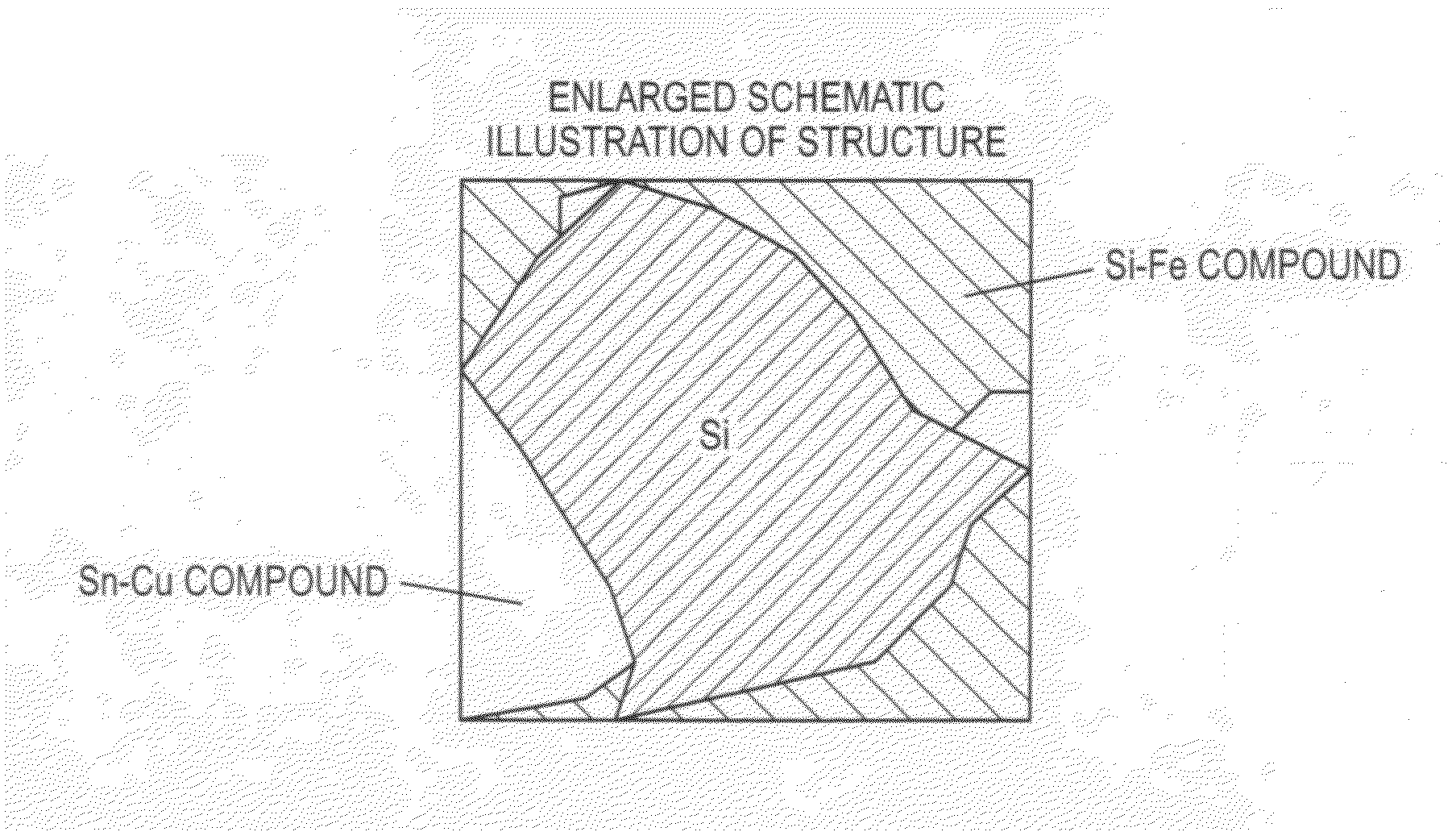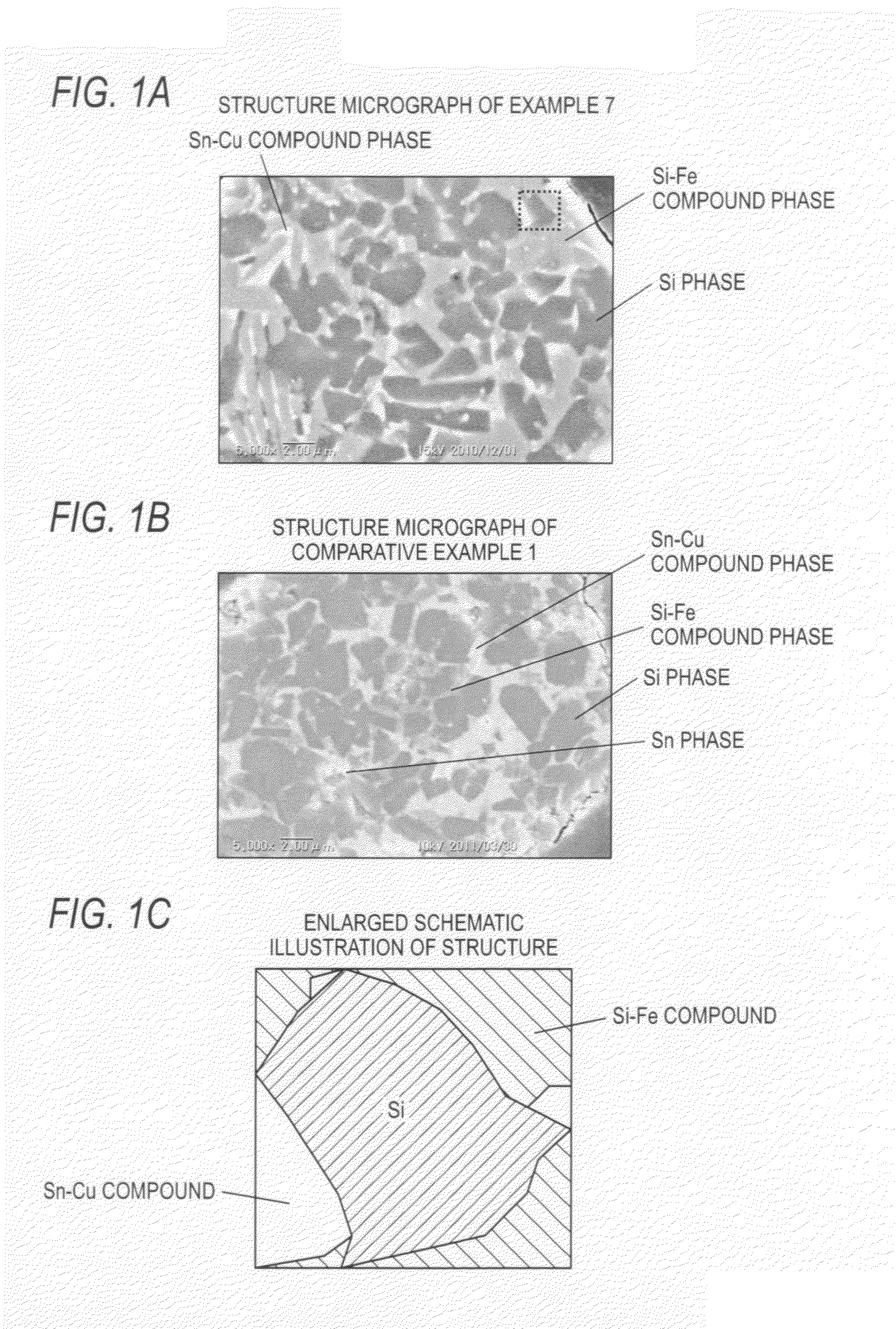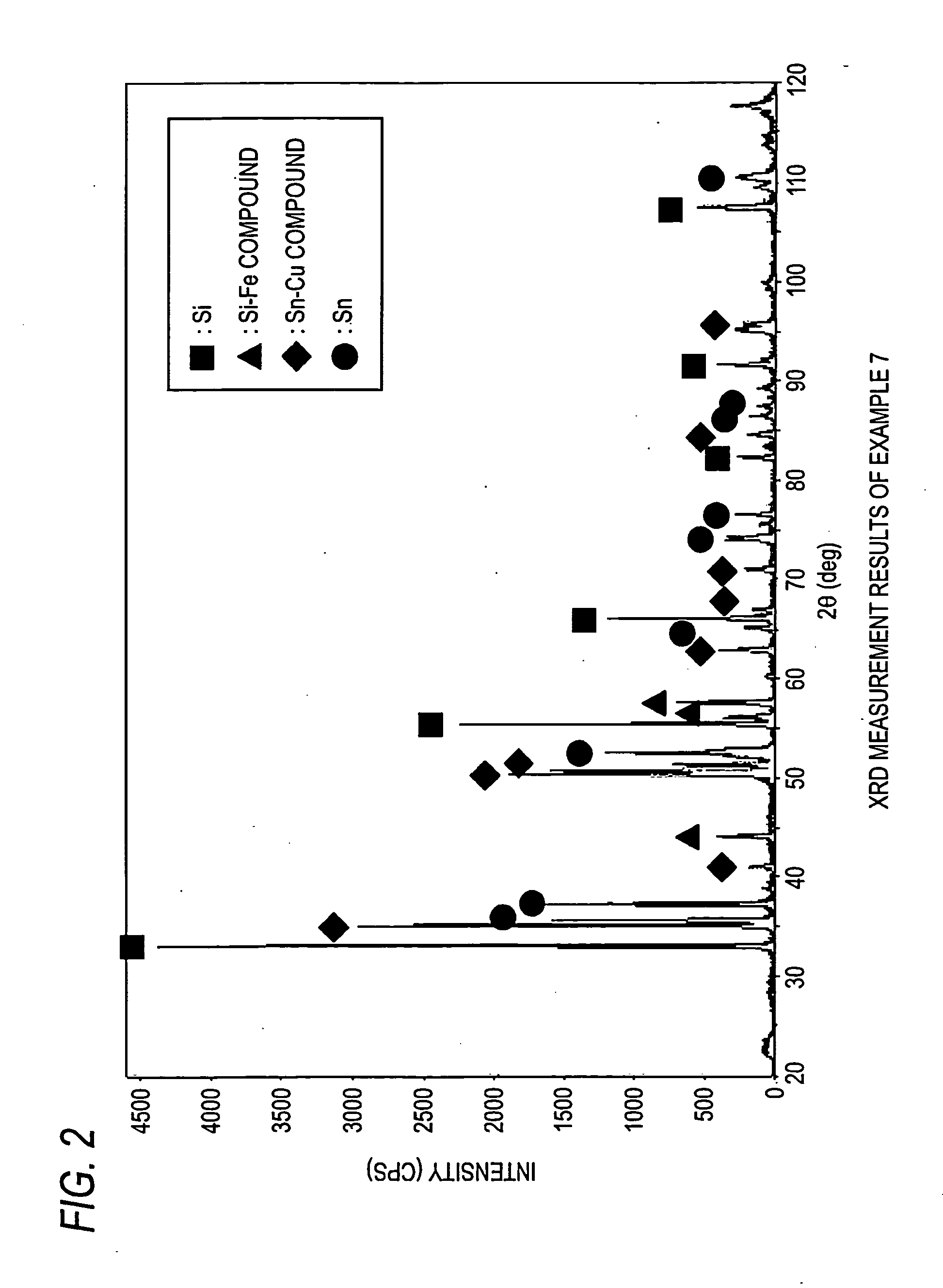Negative electrode active material for lithium ion battery, and negative electrode for lithium ion battery using the same
a technology of active materials and negative electrodes, which is applied in the direction of metal/alloy conductors, cell components, conductors, etc., can solve the problems of deteriorating cycling characteristics, increasing capacity, and large expansion and contraction in volume, so as to suppress the breakage of the binder and increase the capacity. , the effect of enhancing the cycling characteristics
- Summary
- Abstract
- Description
- Claims
- Application Information
AI Technical Summary
Benefits of technology
Problems solved by technology
Method used
Image
Examples
examples
[0116]The invention will be described in more detail with reference to examples below. The percentages for the alloy compositions and the alloy mixing ratios are percentages by mass unless otherwise indicated.
1. Production of Negative Electrode Active Material
[0117]The raw materials were weighed to make the alloy compositions shown in Table 1 below. The raw materials thus weighed were melted by heating in a high frequency induction furnace to prepare alloy melts. Negative electrode active materials were produced from the resulting alloy melts by a gas atomizing method. The atmosphere upon producing the alloy melts and performing the gas atomization was an argon atmosphere. Upon performing the gas atomization, argon gas was blown at a high pressure (4 MPa) onto the alloy melt, which flowed downward continuously into a bar form in the atomization chamber.
[0118]The resulting powder was classified into 25 μm or less with a sieve, thereby preparing the target active material.
[0119]Table ...
PUM
| Property | Measurement | Unit |
|---|---|---|
| particle diameter | aaaaa | aaaaa |
| size | aaaaa | aaaaa |
| size | aaaaa | aaaaa |
Abstract
Description
Claims
Application Information
 Login to View More
Login to View More - R&D
- Intellectual Property
- Life Sciences
- Materials
- Tech Scout
- Unparalleled Data Quality
- Higher Quality Content
- 60% Fewer Hallucinations
Browse by: Latest US Patents, China's latest patents, Technical Efficacy Thesaurus, Application Domain, Technology Topic, Popular Technical Reports.
© 2025 PatSnap. All rights reserved.Legal|Privacy policy|Modern Slavery Act Transparency Statement|Sitemap|About US| Contact US: help@patsnap.com



